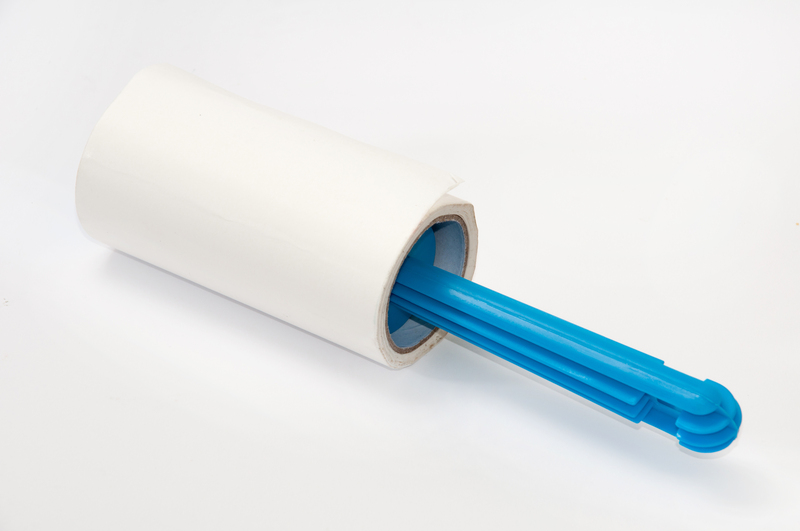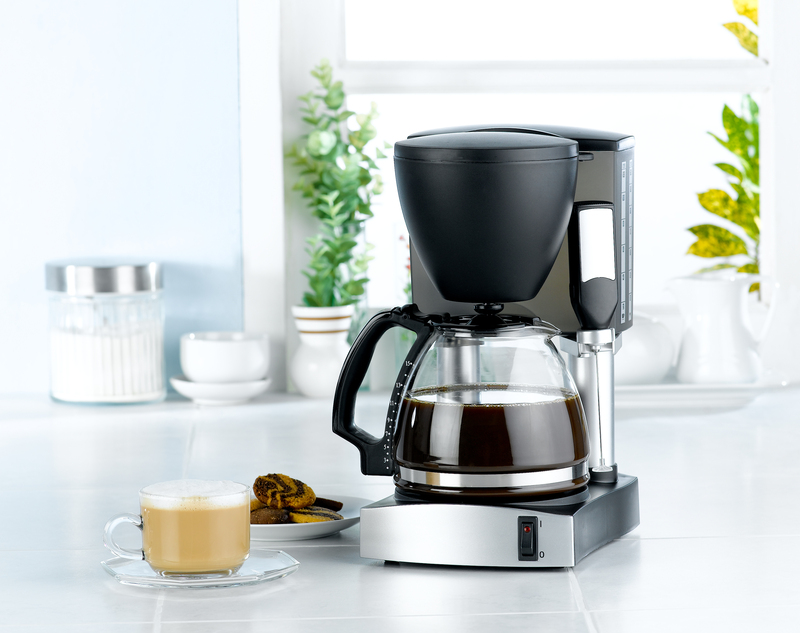Streamline Your Enamel Oven Tray Cleaning Routine
Posted on 25/05/2025
Streamline Your Enamel Oven Tray Cleaning Routine: The Ultimate Guide
Are you tired of scrubbing endlessly at stubborn food buildup on your favorite enamel oven tray? Do you wish your oven trays could look sparkling clean without all the hard labor or harsh chemicals? Streamlining your enamel oven tray cleaning routine is not only possible, but it can also be quick, safe, and efficient! This comprehensive article will walk you through the best tips and tricks to speed up, simplify, and improve your approach to enamel tray care. Say goodbye to frustration and hello to a pristine finish in half the time!
Why Proper Care for Enamel Oven Trays Matters
_Enamel-coated oven trays_ have become the preferred choice in many kitchens. This is thanks to their attractive look, non-stick qualities, and durability. However, without a streamlined cleaning routine, even the best enamel finish can become stained, chipped, or dull over time. Here's why taking care of your enamel oven tray matters:
- Preserves Appearance: Regular and gentle cleaning maintains the tray's glossy, attractive finish.
- Prolongs Lifespan: Preventing buildup and scratches ensures your tray serves you for years.
- Improves Food Safety: Proper cleaning removes harmful bacteria and charred residue.
- Reduces Effort: Streamlined methods prevent tough-to-remove stains from forming in the first place.

Understanding Your Enamel Oven Tray
Before revamping your cleaning routine, it's key to understand what your tray is made of. _Enamel trays_ are typically crafted from a metal core (such as steel or aluminum) and coated with a layer of glass-like enamel. This coating provides a smooth, non-porous surface that resists rust and generally prevents sticking.
Common issues faced by enamel oven tray owners:
- Stubborn, baked-on grease or stains
- Scratches or chips from abrasive scrubbers
- Discoloration over time due to burnt food
- Smelly residual odors
Avoiding these problems requires both the right tools and the right techniques--let's cover how to streamline the enamel pan cleaning process for great results every time.
Must-Have Supplies for Effortless Enamel Tray Cleaning
A streamlined routine starts with preparation. Assemble these essential, gentle cleaning supplies for the best results:
- Microfiber cloths or sponge: Gentle on enamel, but effective at removing residue
- Baking soda: Natural, mild abrasive that helps lift stains
- White vinegar: Dissolves grease and neutralizes odors
- Dish soap (preferably eco-friendly): Cuts through oil and food particles
- Soft plastic or silicone scraper: Helps dislodge debris without scratching
- Gloves (optional): Protects your hands from prolonged contact with water or cleaners
Your Step-by-Step Enamel Oven Tray Cleaning Routine
1. Prepping: Immediate Action Saves Time
Speed is your best friend! Right after using the tray, allow it to cool but don't let residue harden for too long.
- While still warm (but not hot enough to burn), remove most leftover food using a soft silicone or plastic scraper.
- Soak the tray: Fill the tray or your sink with warm, soapy water and let it sit for at least 15-20 minutes.
- For persistent grease, add a generous sprinkle of baking soda before soaking.
2. Lifting Stubborn Baked-On Stains
Not all messes wipe away easily. When faced with caked-on grime, try this method to streamline cleaning enamel oven trays:
- After soaking, sprinkle more baking soda on heavily stained areas.
- Dampen a sponge with white vinegar and gently scrub in circular motions. The mixture will fizz, helping to lift stains.
- Rinse thoroughly with warm water, checking if residue remains. Repeat if needed, but always use gentle pressure to protect the enamel.
3. Dealing with Tough Burnt Patches
For extreme situations:
- Mix a paste of baking soda and water and apply to the affected area.
- Let it sit for up to an hour, allowing the paste to penetrate and break down the burnt residue.
- Gently scrub with a non-abrasive sponge and rinse thoroughly.
4. Neutralizing Odors & Extra Cleaning Power
If your tray smells like last week's roast, neutralize odors by:
- Rinsing the tray, then wiping it down with a cloth soaked in diluted white vinegar.
- Let it air dry completely to prevent lingering odors or moisture buildup.
Maintenance Tips: Keeping Enamel Oven Trays Cleaner, Longer
- Avoid metal utensils: They can chip or scratch the enamel, making future cleaning harder.
- Never use steel wool or abrasive scrubbers: Always choose non-scratch options like microfiber cloths or silicone tools.
- Do not expose to extreme temperature changes: Allow the tray to cool naturally before placing in water.
- Prompt clean-up: The less time residue sits, the less effort is needed later!
- Line with baking paper or silicone mats: These prevent direct contact with food and minimize mess.
- Periodic deep cleaning: Even with regular maintenance, give your tray a monthly deep clean as described above.
Common Mistakes to Avoid with Enamel Oven Tray Cleaning
- Using harsh chemicals or bleach: These can discolor or damage the enamel coating.
- Soaking for too long: Extended soaking, especially in cold water, can weaken the enamel over time.
- Scraping with sharp objects: Avoid knives or metal spatulas, even for stuck-on food.
- Stacking trays without protection: Place a soft towel or paper between trays to avoid scratching.
Alternative Cleaning Methods for Enamel Oven Trays
In addition to standard approaches, here are a few alternative cleaning strategies you can integrate into your routine for extra convenience:
The Dishwasher Dilemma
- Check if your enamel tray is dishwasher safe. Many are, but high heat or certain detergents might dull the finish.
- Even when using the dishwasher, always remove major food debris first to prevent baked-on residue.
Lemon and Salt Scrub
- Use half a lemon dipped in salt as a natural deodorizer and gentle abrasive to remove light stains and refresh the enamel's shine.
Baking Powder for Extra Shine
- Sprinkle a thin layer of baking powder on a wet tray and leave for 5-10 minutes before rinsing. This helps restore the glossy finish.
Quick Routine for Busy Cooks: Clean in 5 Minutes or Less
- Let the tray cool until warm, never cold.
- Quickly wipe away leftover grease/crumbs with a paper towel.
- Spritz with a solution of water and vinegar, let sit 1 minute.
- Wipe down with a soft damp cloth or sponge, using a sprinkle of baking soda if needed.
- Rinse, dry, and store. Done!
Environmentally Friendly Oven Tray Cleaning
Many mainstream cleaners contain chemicals that can be harsh on your skin, your enamel trays, and the environment. An eco-friendly cleaning routine harnesses the power of effective, all-natural ingredients. Some tips:
- Use white vinegar, baking soda, and lemon as your core cleaning trio.
- Choose plant-based or biodegradable dish soaps.
- Reuse old cotton t-shirts as cleaning cloths instead of disposable wipes.
How Often Should You Clean Enamel Oven Trays?
A proactive and consistent cleaning schedule reduces effort and prevents damage. Here's a basic guide:
- After every use: Light cleaning with soapy water, wiping away grease and food residue.
- Weekly: Deeper cleanse with baking soda and vinegar to prevent buildup.
- Monthly: Inspect for chips or cracks and perform a comprehensive clean. If you notice persistent stains, address them with a spot treatment.
Maintaining this structured cleaning routine ensures your enamel oven trays remain hygienic, glossy, and easier to use with every meal.
How to Restore and Revitalize Old Enamel Oven Trays
If your enamel tray is already looking tired or worn, try these restorative tips before replacing it:
- For discoloration: Soak overnight in a solution of hot water, vinegar, and a handful of baking soda.
- For stubborn dark marks: Use a pumice stone specially designed for cookware, gently rubbing only the affected spots. Be extremely cautious to avoid scratching.
- Treat minor chips: Food-grade enamel repair kits are available for touching up small chips and preventing rust.

Frequently Asked Questions About Enamel Oven Tray Cleaning
Can I use oven cleaner on enamel trays?
Avoid using harsh commercial oven cleaners on enamel trays. These products often contain lye or ammonia, which can strip or pit the enamel surface. Stick to milder, natural cleansers.
What if my enamel tray has a chip or crack?
Discontinue using trays with large chips or cracks, as food could leach iron or other metals from the underlying core. Minor chips can sometimes be patched with repair kits, but when in doubt, opt for a replacement.
Can enamel trays go in the dishwasher?
Some enamel trays are labeled dishwasher safe, but frequent dishwasher use might dull the finish over time. Hand washing is always the gentlest approach.
How do I know when it's time to replace my enamel oven tray?
If you notice large chips, cracks, persistent rust, or the tray warps or no longer sits flat, it's time to invest in a new enamel tray for safety and performance.
Conclusion: Enjoy Stress-Free, Spotless Enamel Oven Trays
By following this comprehensive guide, you'll learn how to streamline your enamel oven tray cleaning routine and keep your cookware looking fantastic with minimal effort. A few smart habits, gentle products, and timely interventions can spare you from scrubbing marathons and extend the life of your favorite trays. Your kitchen (and your sanity) will thank you!
For best results, remember: Act quickly, clean gently, and protect the enamel coating at all costs. With the right routine, your sparkling enamel oven trays will be ready to serve delicious meals for years to come.
```



